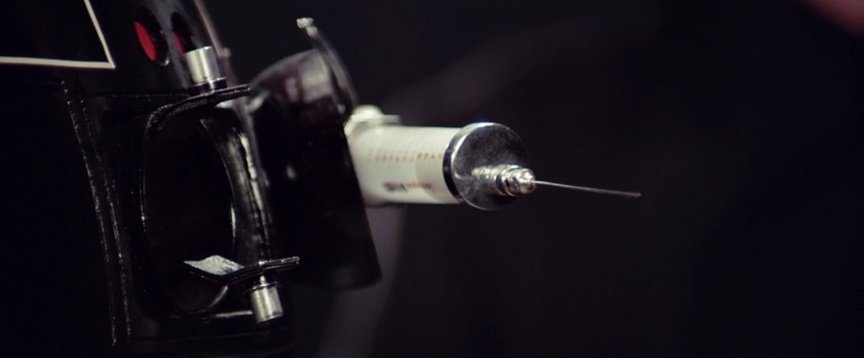'THERESE RAQUIN' BY EMILE ZOLA

When Jenny first appears in Raising Cain, behind Carter (or, er, who she thinks is Carter but who is actually Cain), she is holding a book. Jenny tells "Carter" that she is going to go lay down, and, continuing to hold her place in the book, carries it with her as she lays down on the bed and begins to read. Of course, Cain has designs of his own, and interrupts Jenny's book reading. In all of these shots, as framed in the film itself, it is not exactly easy to identify what book Jenny is reading. However, from looking at those shots of the book in the film and googling through dozens of Penguin Classics book covers, I was able to come to the conclusion that the book is Thérèse Raquin by Émile Zola. And then I found a publicity still taken by on-set photographer Phil Bray that makes it clear as day.


Thérèse Raquin is a novel that deals with the subject of adultery, which, of course, is also a main subject of Raising Cain (if Laure falls asleep in Femme Fatale while watching Double Indemnity, it can also be suggested that Jenny falls asleep in Raising Cain while leafing through Thérèse Raquin). And, of course, Thérèse Raquin is the inspiration for the upcoming novel by Brian De Palma and Susan Lehman, to be titled Terry.
In a La Repubblica interview from last year, Brian De Palma is asked by Silvia Bizio whether he and Susan Lehman will write together in the future. "We have already written another book," De Palma responds. "It's called Terry. It is inspired by Emile Zola's Thérèse Raquin and it's about a film production that is making a film about the book. There is a love triangle in the film, a lover, and a murder. And the same thing happens among the characters who are making the film."
In March of 2019, in an on-stage chat at the Quais du Polar in Lyon, France, De Palma had mentioned Thérèse Raquin as both a film idea he's had for years, and also as the subject of their next novel. With Lehman on stage with him, the subject came up during the Q&A when an audience member asked De Palma, "Are there any French characters, authors or films that inspire you?"
"I've made a lot of movies here," De Palma began in response. "And Thérèse Raquin is an idea I've... always had an idea for a movie for. Thérèse Raquin's been made many times, but I think I have a new way of... in fact, that's sort of the subject of our next novel, isn't it? We love the French, that's why we're here. They're very kind to me."
In fact, De Palma was close to getting his film version of this story, to be titled Magic Hour, made in 2013 with producer Saïd Ben Saïd. The pair had just made Passion together the year before. Screen Daily's Geoffrey Macnab reported that Emily Mortimer was to play the lead in the film, which was described as a "loose adaptation of Emile Zola's Therese Raquin, featuring both period and contemporary elements." Macnab added that "the story is about a film director and two actors shooting a movie version of Zola's novel and finding that it reflects experiences in their own lives."
"IT IS A KIND OF FILM TESTAMENT"
Earlier in 2013, without naming the project, Ben Saïd told Nicolas Schaller about a film he was then developing with De Palma: "This is a film about cinema that is not devoid of humor or cruelty. It happens on a shoot between a director, an actor and an actress. De Palma wrote it by drawing on things that have happened to him. It is a kind of film testament."
Previously:
De Palma's Therese Raquin film titled Magic Hour
Emily Mortimer cast in De Palma's next film
Updated: Tuesday, June 22, 2021 12:02 AM CDT
Post Comment | View Comments (2) | Permalink | Share This Post









































